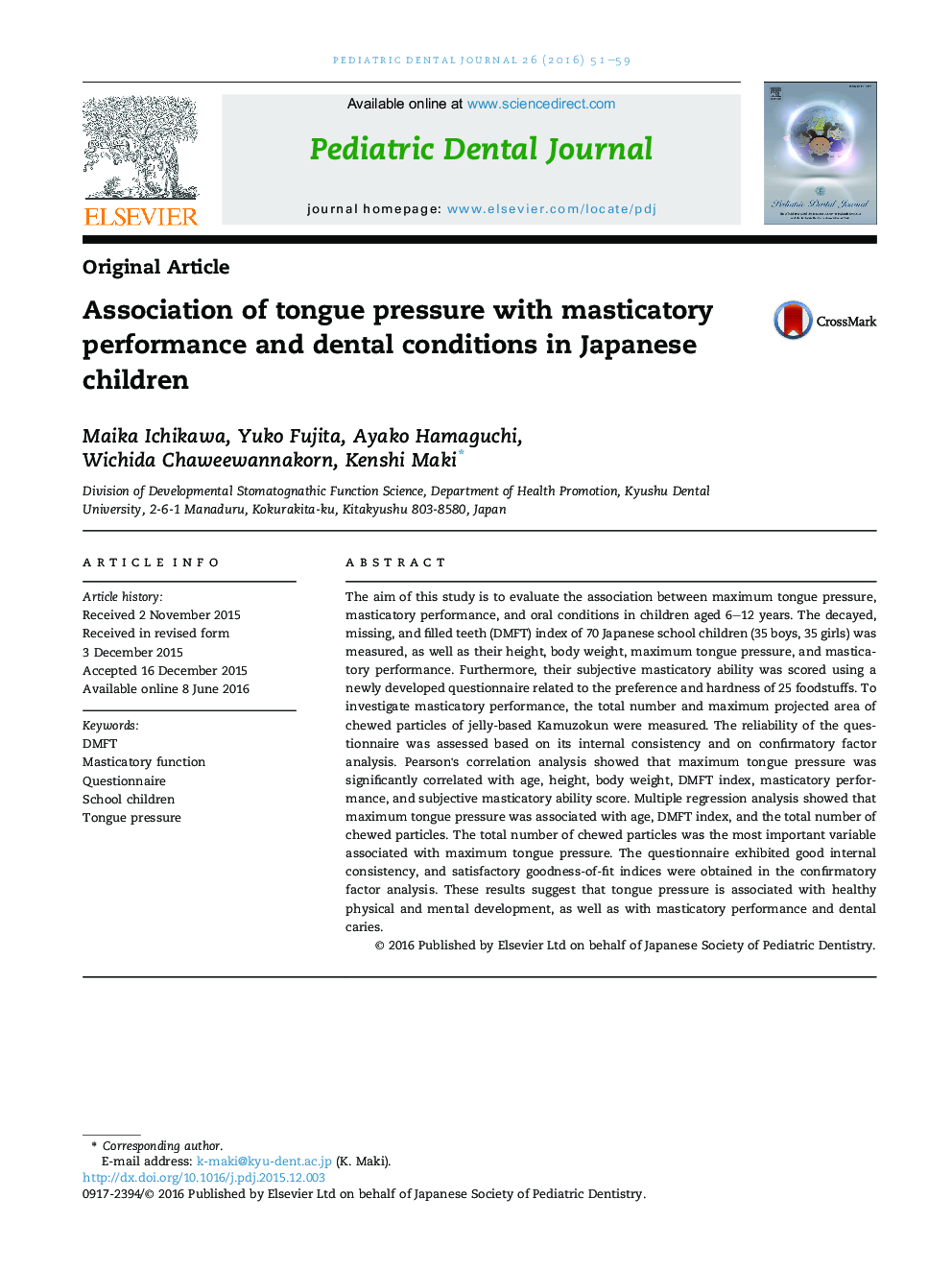| Article ID | Journal | Published Year | Pages | File Type |
|---|---|---|---|---|
| 3171469 | Pediatric Dental Journal | 2016 | 9 Pages |
The aim of this study is to evaluate the association between maximum tongue pressure, masticatory performance, and oral conditions in children aged 6–12 years. The decayed, missing, and filled teeth (DMFT) index of 70 Japanese school children (35 boys, 35 girls) was measured, as well as their height, body weight, maximum tongue pressure, and masticatory performance. Furthermore, their subjective masticatory ability was scored using a newly developed questionnaire related to the preference and hardness of 25 foodstuffs. To investigate masticatory performance, the total number and maximum projected area of chewed particles of jelly-based Kamuzokun were measured. The reliability of the questionnaire was assessed based on its internal consistency and on confirmatory factor analysis. Pearson's correlation analysis showed that maximum tongue pressure was significantly correlated with age, height, body weight, DMFT index, masticatory performance, and subjective masticatory ability score. Multiple regression analysis showed that maximum tongue pressure was associated with age, DMFT index, and the total number of chewed particles. The total number of chewed particles was the most important variable associated with maximum tongue pressure. The questionnaire exhibited good internal consistency, and satisfactory goodness-of-fit indices were obtained in the confirmatory factor analysis. These results suggest that tongue pressure is associated with healthy physical and mental development, as well as with masticatory performance and dental caries.
